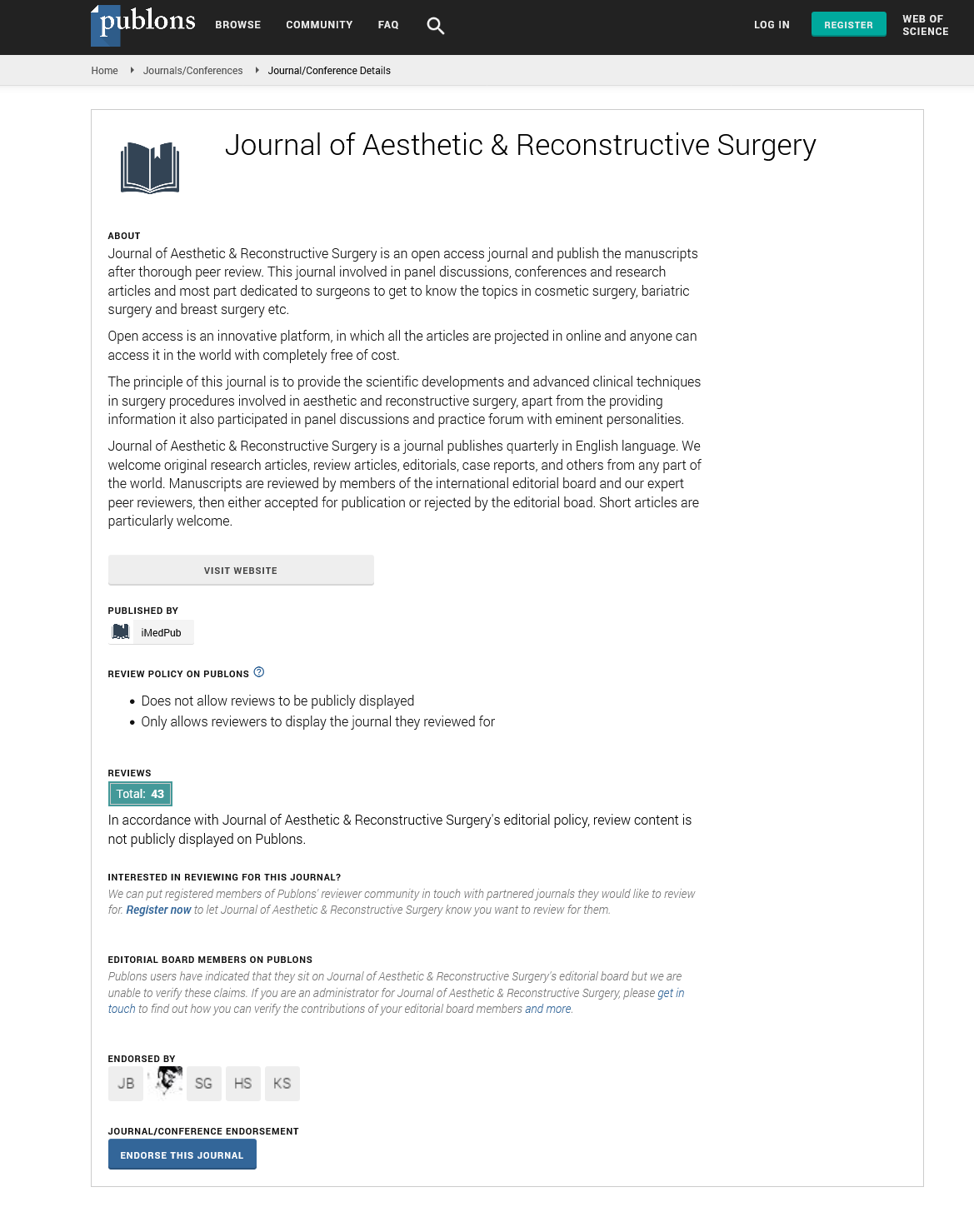ISSN : 2472-1905
Journal of Aesthetic & Reconstructive Surgery
The novel method for facial lymph drainage dynamic status visualization
2nd International Conference on Plastic & Aesthetic Surgery
July 27-28, 2017 Vancouver, Canada
Paruyr Antonyan and Volokh Maria
North-Western State Medical University named after I.I. Mechnikov, Russia
Posters & Accepted Abstracts: J Aesthet Reconstr Surg
Abstract
Introduction: The lymphatic system (LS) plays an important role in microcirculation and pathogenesis of inflammation. Preserving lymphatics from iatrogenic damage is important to minimize the post-operative complications rate such as edema, swelling, bad scaring etc. Coetaneous lymphatics are located superficially and vessels have a diameter of 0.2-1.0 mm, lymphatic fluid is colorless and the identification of lymphatic vessels during surgery is a difficult task.
Materials & Methods: To visualize the LS, we used the method of near infrared fluorescence imaging (NIR) with indocyanine green (ICG). In the proposed sites of major lymphatic ducts ICG was injected intra-dermally prior to 72 hours before surgery (dosage: 0.05 mg/0.2 ml per injection site). After the injection ICG binds to albumin and is absorbed by the lymphatic system and can be displayed from the tissue depth of 10-12 mm. Lymphatic duct visualization was possible after 20 min from injection. We performed the same injection technique intra-operative after the 3 following facelift surgeries: 1) SMAS-ectomy, with subcutaneous undermining; 2 SMAS plication, with subcutaneous undermining and 3) SMAS-ectomy with the very limited subcutaneous dissection.
Results: The first 2 types of facelift techniques showed no absorption of ICG by the lymphatic vessels, while during the third one we were able to visualize the existence of lymphatic flow in the medial part of midface (from infraorbital rim to submandibular lymph nodes). In this particular case we can assume that subcutaneous undermining can be the major cause of lymph drainage cessation.
Conclusion: This small pilot study cannot sufficiently indicate how different types of facelifts affect lymphatic drainage and for those reason further researches is needed. In addition, our research challenges the theory that the superficial mobilization of the skin flap during facelift is less harmful for the lymphatic system compared with the deeper (sub-SMAS) dissections.
Biography
E-mail: paruyrant@gmail.com
Google Scholar citation report
Citations : 130
Journal of Aesthetic & Reconstructive Surgery received 130 citations as per Google Scholar report
Journal of Aesthetic & Reconstructive Surgery peer review process verified at publons
Abstracted/Indexed in
- Google Scholar
- China National Knowledge Infrastructure (CNKI)
- Directory of Research Journal Indexing (DRJI)
- WorldCat
- Publons
- Geneva Foundation for Medical Education and Research
- Secret Search Engine Labs
- Euro Pub
Open Access Journals
- Aquaculture & Veterinary Science
- Chemistry & Chemical Sciences
- Clinical Sciences
- Engineering
- General Science
- Genetics & Molecular Biology
- Health Care & Nursing
- Immunology & Microbiology
- Materials Science
- Mathematics & Physics
- Medical Sciences
- Neurology & Psychiatry
- Oncology & Cancer Science
- Pharmaceutical Sciences
